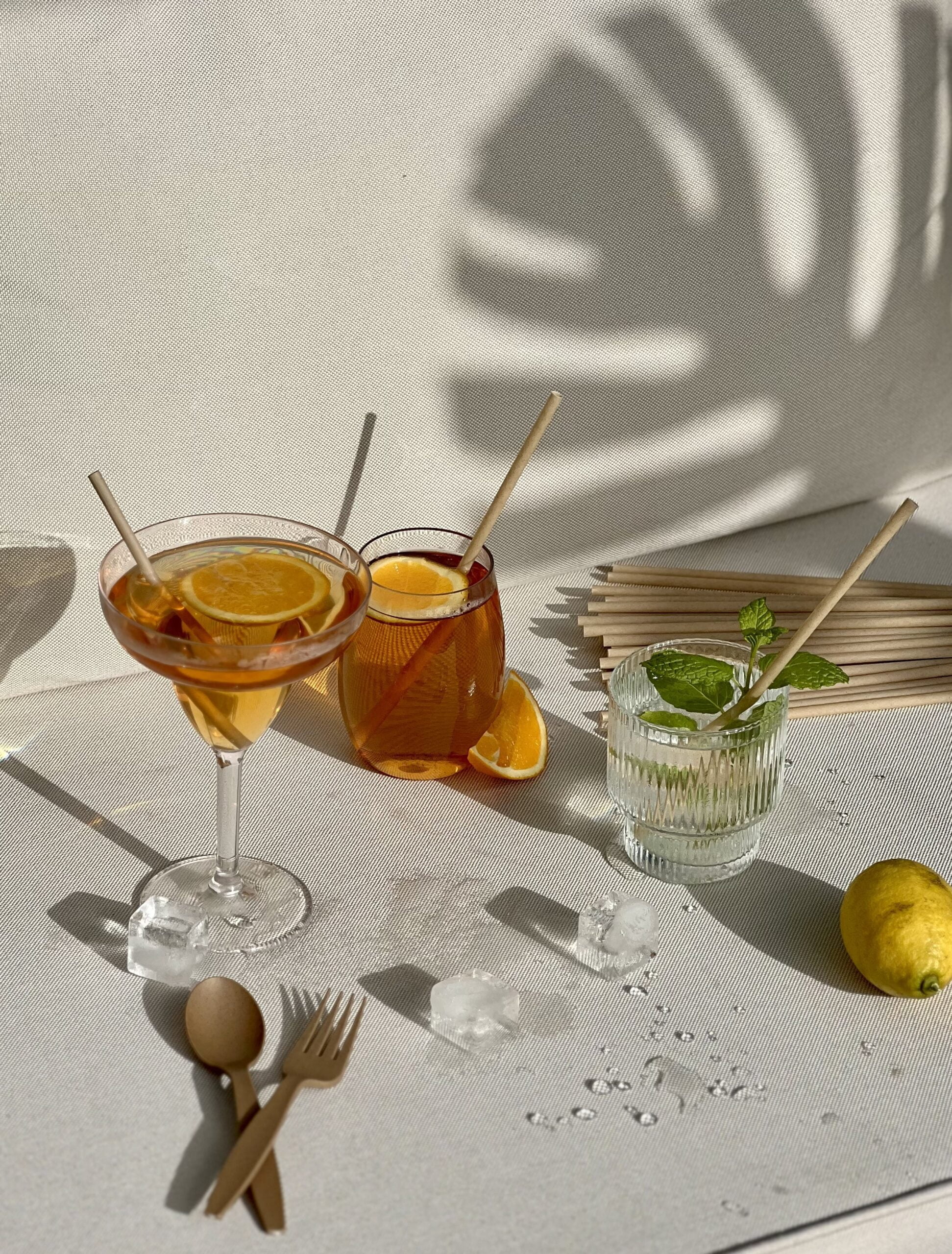With the rise in climate change, environmental of impacts single-use waste pollution and the increasing need for alternatives, cocktail bartenders are being encouraged to use zero-waste methods. In addition, combining various base spirits with morenenvironmentally friendly products and locally sourced, fresh ingredients gives a traditional cocktail a unique flavour and sustainable twist.
What methods of zero waste mixology are there?
The bar’s zero waste methods are concentrated on:
- Repurposing, reusing, or up cycling materials.
The goal of bartenders is to:
- Discard fewer remaining components.
- Find other applications for leftover ingredients.
- Locate more environmentally friendly / reusable options.
Important zero-waste mixology methods and advice
The first step in zero-waste mixology is the more efficient use of the ingredients, such as:
- Seeds, rinds, peels, and fruits
Making the most of your selected ingredients is the best way to begin making zero-waste drinks. This entails garnishing thoughtfully and ceasing to put any leftover fruit or peels in the wastebasket. Even the ones you pass over because they’re too wacky or unsightly to use as a garnish.
Using them as a taste infusion by distilling them into syrups or spirits is a fantastic substitute. It will greatly enhance the flavour of regular spirits.
For example: After juicing the orange, don’t discard the peel. Instead, repurpose it into a stunning cocktail garnish by placing it on the rim of the glass.
Fermentation as a zero-waste cocktail method
Making wine or sodas out of leftover ingredients is another zero-waste method.
It entails heating water and sugar with fruits. After the mixture has cooled, yeast is added, and fermentation will begin.
Fruit fermentation is one of the quickest processes; it typically takes 24 to 48 hours. But the fruit can ferment for as long as two or three weeks.
Reusable ice
Additionally, ice should be zero-waste. Bartenders must try to reduce their energy use, emissions, and save on water resources.
Sustainable substitutes consist of:
- Stainless steel cubes are a very efficient way to chill a beverage. In just two hours in the freezer, they reach the freezing point quickly and maintain colder liquids for extended periods of time.
- Stone Ice Cubes are composed of soapstone or marble and come in a variety of hues. They don’t absorb moisture. Just place in the freezer for three hours or longer. Then, add to chilled drinks to keep them that way.
Dried-out cocktail garnishes
Glass garnishes are a great way to practice zero-waste mixology. After the drink itself has been savoured, they are too readily thrown away.
Ensuring every cocktail garnish is edible is one way to solve the problem. But more and more mixologists are choosing to serve their drinks without garnish.
What occurs, though, when a drink insists on having that last, peculiar detail perched on the edge of the glass! Using dehydrated fruit is a terrific zero waste mixology method.
Start by selecting fresh, ripe fruits such as oranges, lemons, or apples. Wash and peel them as needed, then slice them into uniform pieces to ensure even dehydration. Arrange the slices on a dehydrator tray, making sure to leave space between each piece for proper air circulation. Set the dehydrator to a temperature that suits the specific fruit for 6 to 12 hours. Keep a watchful eye on your fruity creations, and when they reach a leathery or slightly pliable texture, they’re ready to be enjoyed.
Sustainable napkin and straw options
One major perk for bartenders is that napkins and cocktail straws made of plastic can be swapped out.
Straws nowadays must be constructed from eco-friendly materials like:
– Sugarcane straws: These are the best single-use straw alternative available. They are created by up cycling sugarcane waste (bagasse) and are 100% compostable. They also never go soggy! A must have for any bar and a great alternative to paper.
– Bamboo straws: Excellent for a reusable and biodegradable straw option. They are natural, durable and reusable straws that are made by nature and can be returned to nature once they aren’t suitable for drinks anymore.
Linen napkins that are made from natural wood fibres are very strong and can be used instead of ordinary paper cocktail napkins. Another great alternative to single-use paper.
Conclusion
In the realm of mixology, zero-waste methods are gaining traction, not only for environmental reasons but also for creating distinctive cocktails. Bartenders focus on repurposing materials, discarding fewer components, and finding alternative uses for leftover ingredients.
Efficient use of ingredients, fermentation, reusable ice, and dehydrated fruit garnishes are key techniques. Sustainable options for straws and napkins further contribute to eco-friendly practices. In the world of cocktails, it’s not just about raising glasses but also raising awareness. Cheers to a sustainable sip!

